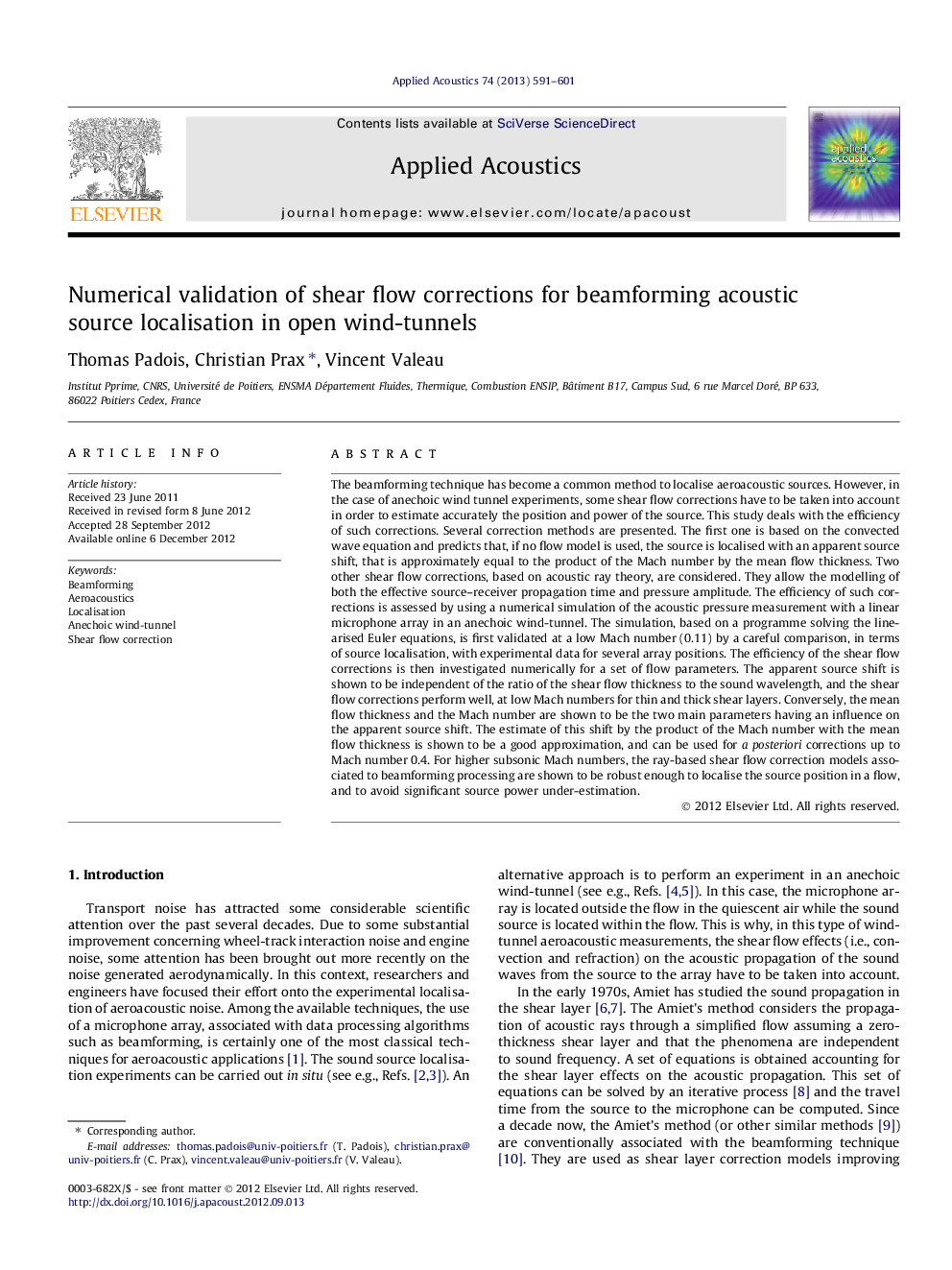| Article ID | Journal | Published Year | Pages | File Type |
|---|---|---|---|---|
| 754681 | Applied Acoustics | 2013 | 11 Pages |
The beamforming technique has become a common method to localise aeroacoustic sources. However, in the case of anechoic wind tunnel experiments, some shear flow corrections have to be taken into account in order to estimate accurately the position and power of the source. This study deals with the efficiency of such corrections. Several correction methods are presented. The first one is based on the convected wave equation and predicts that, if no flow model is used, the source is localised with an apparent source shift, that is approximately equal to the product of the Mach number by the mean flow thickness. Two other shear flow corrections, based on acoustic ray theory, are considered. They allow the modelling of both the effective source–receiver propagation time and pressure amplitude. The efficiency of such corrections is assessed by using a numerical simulation of the acoustic pressure measurement with a linear microphone array in an anechoic wind-tunnel. The simulation, based on a programme solving the linearised Euler equations, is first validated at a low Mach number (0.11) by a careful comparison, in terms of source localisation, with experimental data for several array positions. The efficiency of the shear flow corrections is then investigated numerically for a set of flow parameters. The apparent source shift is shown to be independent of the ratio of the shear flow thickness to the sound wavelength, and the shear flow corrections perform well, at low Mach numbers for thin and thick shear layers. Conversely, the mean flow thickness and the Mach number are shown to be the two main parameters having an influence on the apparent source shift. The estimate of this shift by the product of the Mach number with the mean flow thickness is shown to be a good approximation, and can be used for a posteriori corrections up to Mach number 0.4. For higher subsonic Mach numbers, the ray-based shear flow correction models associated to beamforming processing are shown to be robust enough to localise the source position in a flow, and to avoid significant source power under-estimation.
